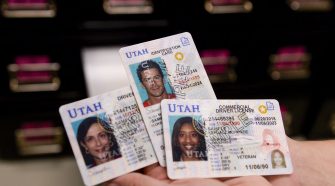Vehicle design needs to incorporate the requirements of senior drivers, which will represent 25% of the market by 2025. By Dustin Boutet
The pandemic drove us to recognise that our world needs a redesign. Moving into the post-pandemic era, it’s important to ensure that people of all ages can safely connect with others and maintain a sense of independence. In the future, this need will be primarily shaped by the automotive industry.
EPAM Continuum recently completed an extensive concept project, Silverkey, and a webinar, The Old Road Test, with Joseph F Coughlin of the MIT AgeLab, on redesigning the senior driving experience. Both suggested a number of ways to age safely behind the wheel.
There are real consequences when seniors leave the driver’s seat. During the webinar, panelists noted that driving represents freedom and independence for many seniors. When they can no longer drive, the likelihood that they’ll tumble into depression doubles; this can eventually land them in senior living. Those who stop driving are more likely to report poor health, according to a Finnish study (59% of driving seniors described their health as good; 43% of ex-drivers described their’s as not good). By keeping senior drivers on the road longer while increasing safety, seniors can delay the entrance into assisted living, stay out of hospitals, and maintain better connections to the community.
There is a place for fully autonomous driving in the future, but the goal is to engage seniors’ brains and bodies while they are still able and encourage them to expand their often rapidly shrinking community
Just having a clear, unemotional conversation about senior driving can be incredibly difficult. According to one study, 39% of those interviewed said a conversation about taking an older relative off the road was the most difficult conversation they’ll ever have. Next hardest: talking about the last will and final wishes. That clocked in at 24%, which is to say it’s easier for them to talk about death than driving.
It’s important to look at ways to coach and improve senior drivers responsibly. By building trust in the system, they may be more likely to give up their keys at the appropriate time with an objective evaluation. There is a place for fully autonomous driving in the future, but the goal is to engage seniors’ brains and bodies while they are still able and encourage them to expand their often rapidly shrinking community. This type of engagement is shown to slow the decline both cognitively and physically.
Car companies will need to design for complexity and the inevitable learning curve. Currently, there are some very different approaches going on in terms of the design and execution of the digital cockpit. Automakers such as Tesla are taking a minimalist approach, while Toyota assumes more of a control-rich strategy. Often, simplicity is mistaken for minimalism. Tesla has chosen to move almost all of its controls onto the touchscreen and this makes for a steep learning curve, especially for digital immigrants, many of whom are older drivers. Toyota’s approach is complete with hard keys for most all of its overwhelming number of interactions.
There are going to be some technical and design challenges to overcome to deliver a safe and engaging experience for this niche of the market. This demographic has certain potential physical and cognitive limitations that will need to be considered in the design. For instance, information density will need to be adjusted depending on the visual acuity of the driver. This is an area in which an adaptive and contextual system could deliver a better experience by changing size and content dependent on the task at hand. As the cognitive abilities decline over time—such as reaction time and hand-eye coordination—the vehicle will need to start to take over some responsibilities from the driver in a way that doesn’t alarm the driver but provides clarity to who’s responsible for reacting to circumstances while mobile.
It’s essential to start with the ideal driving experience for seniors and then backcast from there. This experience is agnostic to a specific technology or the feasibility of existing technology. It helps avoid the trap of technology for technology’s sake, creating shiny experiences because it can be done and not because it solves a specific user need. By creating the ideal experience, it informs both the R&D and design teams of companies.
How to begin making this real
It’s uncertain that any kind of design standards will be established from a federal regulation perspective that approaches what’s needed to create better mobility experiences for seniors. This might require government involvement to help put some of the ecosystem pieces of the puzzle into place. The infrastructure that will enable many future experiences won’t be achievable by just one company. There is a need to think much larger and think about standards that could apply across the industry. For example, how will autonomous cars communicate with each other in the future? Currently, they’re all using some combination of vision, LiDAR and radar-based systems to detect other objects. This will continue to be important, along with addressing how they sync up with each other to provide a tangible benefit to the user.
Advocating for the seniors, doing the research and sitting in the car with them will be increasingly important. Designers bring the perspective of not only understanding what about an experience isn’t working but also how the experience might grow and evolve to be better for the future.
There are going to be some technical and design challenges to overcome to deliver a safe and engaging experience for this niche of the market
During The Old Road Test, Coughlin asked: “How do you get your 85-year-old cognitively impaired mother from her couch in the living room into the car? How do you trust the vehicle to take your mother by herself to where she gets to the other end? How do we get out at the other end?”
Advocates and designers both need to consider the “how” for seniors moving from couch to car and from car to doctor’s appointment, in addition to the driving aspect. There will need to be a thoughtful ecosystem. Of course, many of these future scenarios are predicated on free-flowing data. This only works if there is trust in the system and users/drivers know exactly what they are trading some of their information for here.
No matter what plan is ultimately adopted by the auto industry, it must start with human-centred research and iterative prototyping while testing in a safe, controlled environment. You need this, all this, to pass the old road test.
About the author: Dustin Boutet is Innovation Consulting, Travel & Hospitality Lead at EPAM Continuum















